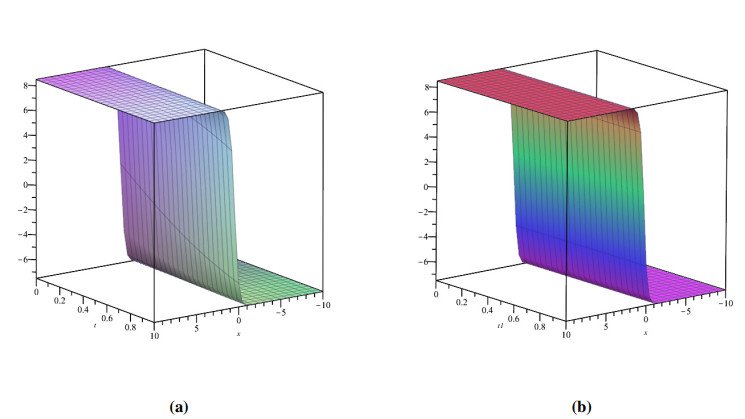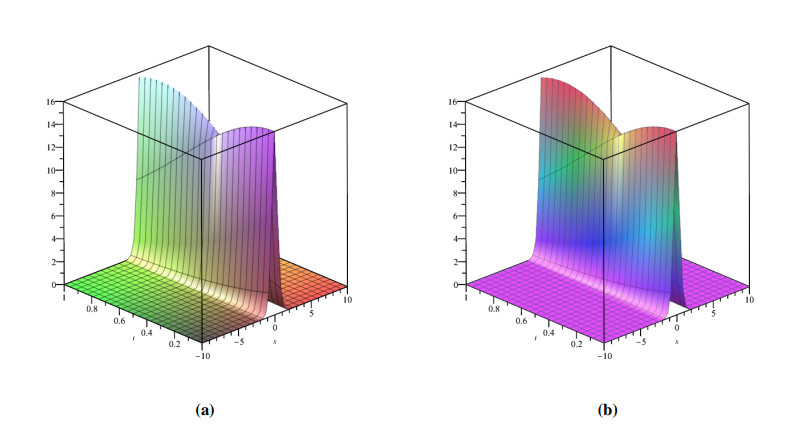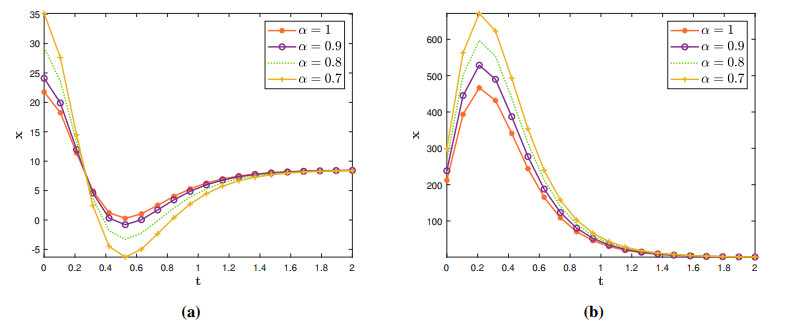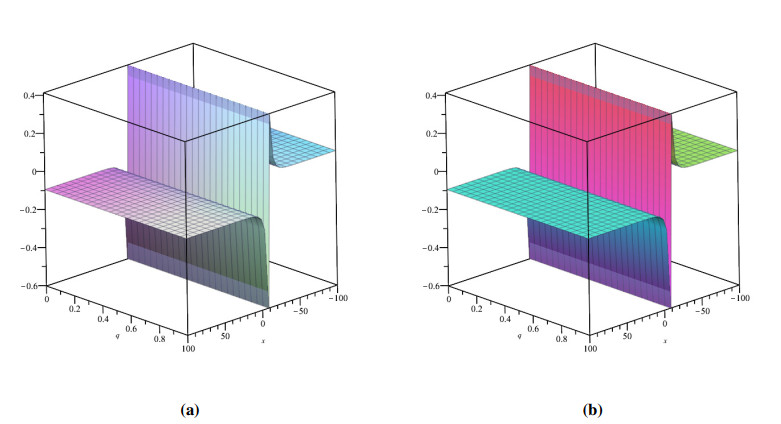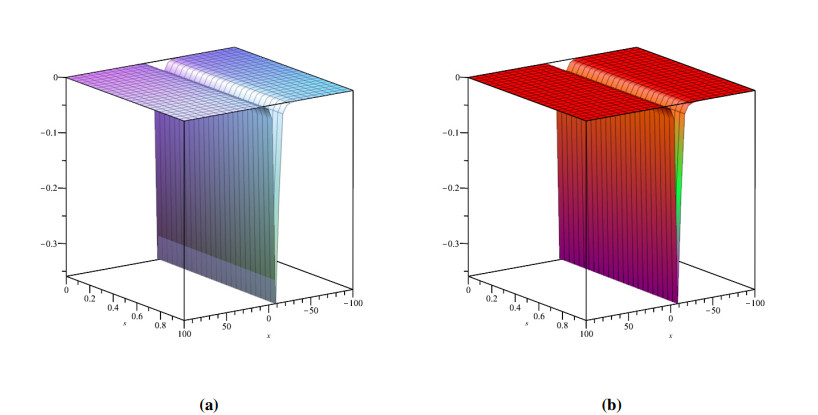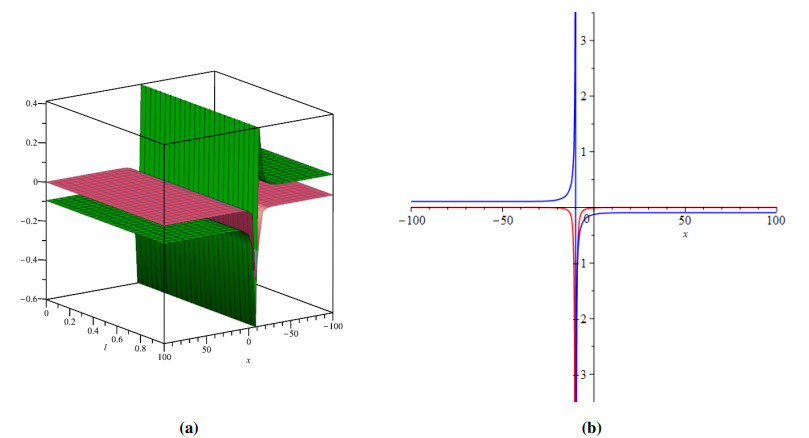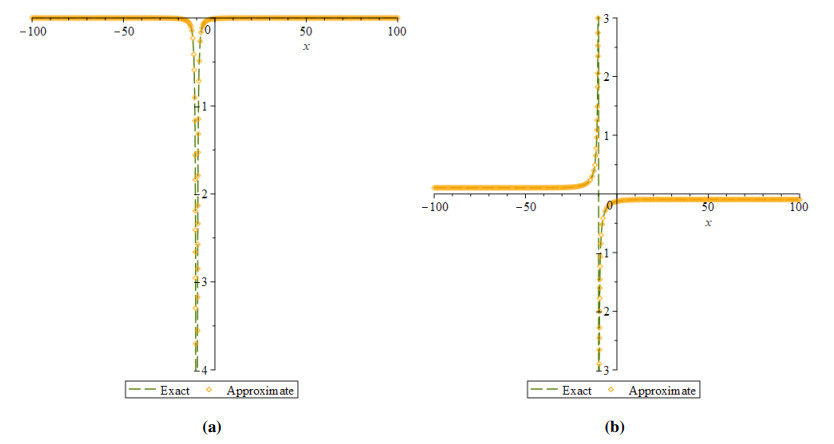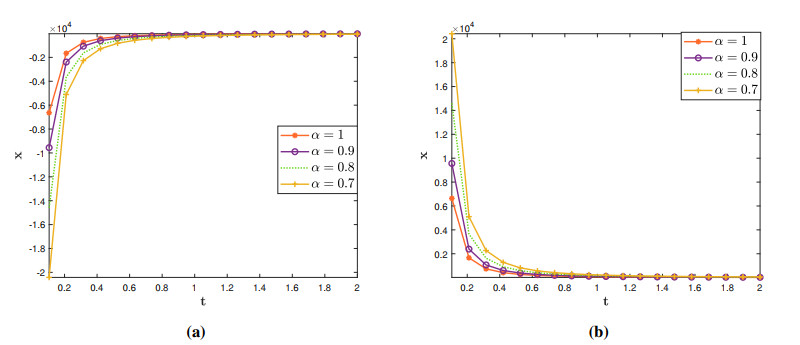1.
Introduction
The enrichment of day-to-day existence is the cornerstone of the environment and sentient creatures. Time is constantly a global autonomous factor in the cosmos, and eternity is often referred to as such. Furthermore, scholars are continuously in need of a technology that can assist them in describing the current phase and forecasting the development of many real-world occurrences [1,2,3,4,5,6,7,8]. In this way, renowned scholars and physicists like Newton and Leibniz separately suggested the method of calculus from their respective individual perspectives. Subsequently, several scholars and practitioners believed that a basic formula might be used to examine practically all theories on the planet rather than any other forms of resources or machines. However, numerous academics from different fields have previously confirmed that the idea of conventional calculus with differential and integral operators underestimates certain crucial and fascinating phenomena [9,10,11,12,13,14,15]. Others with inherent features, non-Markovian dynamics, and some others in general [16,17,18,19,20]. Besides that, analysts are indeed completely eager to describe and invent a conceptual technique to address many of the reported flaws.
Fractional calculus (FC) was developed shortly after conventional calculus, but numerous scientists and researchers are now considering the conception and ideas of FC to explain essence in a comprehensive way, especially following the revelation of conventional calculus' restrictions. Various researchers established and cultivated the key foundation [21,22,23,24] with the help of innovative characteristics and associated ramifications for FC. A special function theory is used to construct novel fractional formulations. Many academics have employed these operators to analyze and illustrate multiple systems and difficulties connected to intriguing behaviours [25,26,27,28]. In 2016, Atangana and Baleanu suggested a revolutionary operator that overcomes all of the restrictions of the prespecified interpreters using the Mittag-Leffler function [29].
Partial differential equations (PDEs) with non-linearities are used to represent a number of scenarios in physical science and engineering, extending from magnetism to complexities. Spatial PDEs are frequently employed in domains including nano-science, bio-engineering, epidemiology, and hydrodynamics to simulate dynamic behaviour events. Fractional-order PDEs have subsequently sparked considerable interest due to their broad implications in a variety of scientific disciplines, including optimization, image reformation, decision theory, signal transmission, remote sensing and network recognition, and hydrodynamics [30,31,32,33]. Because most design procedures are recognized to be complex, finding a numerical or approximate result is extremely challenging. The most complex strategies can be represented using an adequate collection of PDEs. A considerable effort has gone into inventing a convergent approach that is both convenient and simple. The new iterative method (NIM) [34], homotopy analysis method (HAM) [35], Lie symmetry analysis (LSA) [36], and Laguerre wavelets collocation method (LWCM) [37], residue power series method (RPSM) [33] are just a few of the latest estimated strategies for getting realistic findings for complex PDEs.
Whitham-Broer-Kaup equations (WBKEs) [38] were discovered to characterize the dynamic characteristics of waves that propagate in hydrodynamics. Whitham, Broer, and Kaup [39,40,41] established the coupled strategy for the aforementioned model. This formula describes the dispersion of superficial ripples of liquid with a specified permeation family. The classical form of WBKE is presented as follows:
where ˉp and ˉg are constants stated in distinct dispersion energies, correspondingly, and Φ(ϰ,ˉt) is the linear speed, and Ψ(ϰ,ˉt) is the altitude that detracts from the fluid equilibrium condition, respectively. Exploration of complex PDE systems has been a significant subject of concern [42,43,44] in past times. Intellectuals have devised a slew of ways to investigate the analytical solutions to nonlinear PDEs. Authors [45] have employed the homotopy perturbation method to solve WBKE. Ray [46] obtained the travelling wave solution of WBKE. Tian [47] provides exact and explicit WBKE solutions in shallow water. Veeresha et al. [48] stimulated efficient technique for coupled fractional WBKE describes the propagation of shallow water waves.
Furthermore, ˉq-HATM is taken into account, as was proposed by Singh et al. [49]. This method, which is the combination of a conventional method termed HAM (developed by Liao with the help of the basic notion of topology [50,51]) and the Aboodh transform [52] is employed in this model. The enhanced methodology is presented to solve the shortcomings of the traditional approach, such as large calculation, effectiveness, primary storage, and others. Furthermore, HAM does not necessitate additional convolutions, instabilities, hypotheses, or physical component assessment. As a result, the predicted approach does not demand the aforementioned prerequisites, and it provides various features that may be used to change and regulate the convergence region, as well as increase the reliability of the generated result. Numerous authors state that the proposed framework approach has been implemented in several real-world simulations and situations that encompass various processes [53,54,55]. The investigation employed recently developed fractional operators and methods to evaluate a system of nonlinear complex systems that describes significant behaviors.
In the upcoming sections, we shall go over several of the fundamentals briefly. Sections 3 and 4 describe the basic response process and its relevance to the analyzed system, respectively. The key findings for the investigated interacting mechanism are obtained in Section 5, the consistently highlighted are numerically illustrated in Section 6, and we end with several comments on the acquired outcomes in the last portion of Section 7.
2.
Preliminaries
In this part, we revisit certain key concepts, ideas, and terminologies connected to fractional derivative formulations involving power law and ML as a kernel, as well as the Aboodh transform's specific ramifications.
Definition 2.1. ([23]) The fractional derivative of Caputo (CFD) is specifically defined as:
Definition 2.2. ([29]) The ABC derivative operator is specifically defined as:
where f∈H1(a1,a2)(Sobolevspace),a1<a2,δ∈[0,1] and N(δ) indicates normalization function as N(δ)=N(0)=N(1)=1.
Definition 2.3. ([29]) The ABC fractional integral operator is expressed in the form:
Definition 2.4. ([52]) Aboodh transform for mapping f(ˉt) of exponential order over the set of functions is defined as
is expressed as
is described as
Definition 2.5. [56] The following is the Aboodh transform of CFD operator:
Definition 2.6. ([57]) The ABC fractional derivative operator has the following Aboodh transform:
Definition 2.7. ([58])The ML function for single parameter is defined as
3.
Road map of ˉq-homotopy analysis transform method
The methodology of the proposed approach is presented using Caputo and Atangana-Baleanu fractional derivatives for the model (1.1) of arbitrary order. Here, we surmise a fractional order nonlinear system of the type:
Case I. (Caputo fractional derivative operator)
supplemented with the initial conditions (ICs)
where ca1Dδˉt indicates the Caputo derivative of Φ(ϰ,ˉt).
In view of the differentiation rule of Aboodh transform on (3.1), we obtain
After simplification, we have
The non-linearity factor can be described as
where ˉq∈[0,1/n]. Then, we demonstrate the non-zero auxiliary and embedding factor ℏ, and ˉq, respectively, by the classical approach as below
where A symbolize Aboodh transform, H(ϰ,ˉt) represents the nonzero auxiliary mapping and φ(ϰ,ˉt;ˉq) is an unknown mapping. Also, Φ0(ϰ,ˉt) is the IC of Φ(ϰ,ˉt).
Furthermore, for ˉq=0 and ˉq=1/n, then the subsequent assumptions hold true
Consequently, by amplifying ˉq from 0 to 1/n, the solution φ(ϰ,ˉt;ˉq) tends from Φ0(ϰ,ˉt) to the result Φ(ϰ,ˉt). Develop the mapping φ(ϰ,ˉt;ˉq) in sequence form with the aid of Taylor theorem, one can achieve close to ˉq as
where
With the aid of supplementary linear operator, Φ0(ϰ,ˉt),n,ℏ, then the (3.9) approaches at ˉq=1/n and it yields a solution of (3.3), so we have
The r-times differentiation of (3.7) considering ˉq and dividing by r!, later on substituting ˉq=0, we have
where the vectors are presented as follows:
Employing the inverse Aboodh transform on (3.12), yields
where
and
In (3.33), Hr indicates the homotopy polynomial and is described as
and
Combining (3.14) and (3.16), we have
The series solution by ˉq-HATM is expressed as
Case II. (ABC fractional derivative operator)
supplemented with the initial conditions (ICs)
where ABCa1Dδˉt indicates the AB fractional derivative in the Caputo sense of Φ(ϰ,ˉt).
In view of the differentiation rule of Aboodh transform on (3.19), we obtain
After simplification, we have
The non-linearity factor can be described as
where ˉq∈[0,1/n]. Then, we demonstrate the non-zero auxiliary and embedding factor ℏ, and ˉq, respectively, by the classical approach as below
where A symbolize Aboodh transform, H(ϰ,ˉt) represents the nonzero auxiliary mapping and φ(ϰ,ˉt;ˉq) is an unknown mapping. Also, Φ0(ϰ,ˉt) is the IC of Φ(ϰ,ˉt).
Furthermore, for ˉq=0 and ˉq=1/n, then the subsequent assumptions hold true
Consequently, by amplifying ˉq from 0 to 1/n, the solution φ(ϰ,ˉt;ˉq) tends from Φ0(ϰ,ˉt) to the result Φ(ϰ,ˉt). Develop the mapping φ(ϰ,ˉt;ˉq) in sequence form with the aid of Taylor theorem, one can achieve close to ˉq as
where
With the aid of supplementary linear operator, Φ0(ϰ,ˉt),n,ℏ, then the (3.27) approaches at ˉq=1/n and it yields a solution of (3.23), so we have
The r-times differentiation of (3.25) considering ˉq and dividing by r!, later on substituting ˉq=0, we have
where the vectors are presented as follows:
Employing the inverse Aboodh transform on (3.30), yields
where
and
In (3.33), Hr indicates the homotopy polynomial and is described as
and
Combining (3.32) and (3.34), we have
The series solution by ˉq-HATM is expressed as
Theorem 3.1. (Convergence of the series solutions) Suppose Φn(ϰ,ˉt) and Φ(ϰ,ˉt) are defined in the Banach space (B[0,T],‖.‖). The series solution defined in (3.18) converges to the solution of the (3.1), if λ∈(0,1).
Proof. Consider the sequence {Sn}, which is the partial sum of the (3.18), and we have to prove {Sn} is the Cauchy sequence in (B[0,T],‖.‖). Now consider
Now, for every n,m∈N(m≤n)
Since 0<λ<1, therefore ‖Sn−Sm‖=0. Thus {S}n is the Cauchy sequence. This completes the proof.
4.
Test examples
Example 4.1. Surmise that the fractional-order WBKEs is presented as follows:
supplemented with ICs
Proof. Primarily, we demonstrate how to solve (4.1) in two different scenarios.
Case I: Initially, we employ the Caputo fractional derivative operator considered with the Aboodh transform and ˉq-HATM.
Employing the Aboodh transform on (4.1), we have
It follows that
Therefore, we have
With the aid of (4.5), the non-linearity can be expressed as
Utilizing the methodology described in Section 3, the rth order deformation equation is described as
where
Thanks to the inverse Aboodh transform, we attain
In view of ICs, we have
In order to obtain Φ0(ϰ,ˉt) and Ψ0(ϰ,ˉt), choosing r=1 in (4.8), then we acquire
For r=1, then (4.8) diminish to
Plugging (3.33) and (4.12) in (4.11), then we have
Thus, we have
Analogously, for r=2, then (4.11) and (4.12) yields
After simplification, the foregoing procedure reduces as mentioned
Similarly, we evaluate the remaining term. Then, we have
Case II: Secondly, we employ the ABC fractional derivative operator considered with the Aboodh transform and ˉq-HATM.
Employing the Aboodh transform on (4.1), we have
Therefore, we have
With the aid of (4.19), the non-linearity can be expressed as
Utilizing the methodology described in Section 3, the rth order deformation equation is described as
where
Thanks to the inverse Aboodh transform, we attain
In view of ICs, we have
In order to obtain Φ0(ϰ,ˉt) and Ψ0(ϰ,ˉt), choosing r=1 in (4.23), then we acquire
For r=1, then (4.22) diminish to
Plugging (3.33) and (4.26) in (4.25), then we have
Thus, we have
Analogously, for r=2, then (4.25) and (4.26) yields
After simplification, the foregoing procedure reduces as mentioned
Similarly, we evaluate the remaining term. Then, we have
For δ=1, then the integer-order solution of (4.1) is
Example 4.2. Surmise that the fractional-order WBKEs is presented as follows:
supplemented with ICs
Proof. Primarily, we demonstrate how to solve (4.33) in two different scenarios.
Case I: Initially, we employ the Caputo fractional derivative operator considered with the Aboodh transform and ˉq-HATM.
Employing the Aboodh transform on (4.33), we have
It follows that
Therefore, we have
With the aid of (4.37), the non-linearity can be expressed as
Utilizing the methodology described in Section 3, the rth order deformation equation is described as
where
Thanks to the inverse Aboodh transform, we attain
In view of ICs, we have
In order to obtain Φ0(ϰ,ˉt) and Ψ0(ϰ,ˉt), choosing r=1 in (4.40), then we acquire
For r=1, then (4.40) diminish to
Plugging (3.33) and (4.44) in (4.43), then we have
Thus, we have
Analogously, for r=2, then (4.43) and (4.44) yields
After simplification, the foregoing procedure reduces as mentioned
Similarly, we evaluate the remaining term. Then, we have
Case II: Secondly, we employ the ABC fractional derivative operator considered with the Aboodh transform and ˉq-HATM.
Employing the Aboodh transform on (4.33), we have
Therefore, we have
With the aid of (4.51), the non-linearity can be expressed as
Utilizing the methodology described in Section 3, the rth order deformation equation is described as
where
Thanks to the inverse Aboodh transform, we attain
In view of ICs, we have
In order to obtain Φ0(ϰ,ˉt) and Ψ0(ϰ,ˉt), choosing r=1 in (4.55), then we acquire
For r=1, then (4.54) diminish to
Plugging (3.33) and (4.58) in (4.57), then we have
Thus, we have
Analogously, for r=2, then (4.57) and (4.58) yields
After simplification, the foregoing procedure reduces as mentioned
Similarly, we evaluate the remaining term. Then, we have
For δ=1, then the integer-order solution of (4.33) is
5.
Numerical results and their physical interpretation
The fractional WBKE is solved using the ˉq-HATM merged with the Aboodh transform. For the most part, MATLAB 21 has been implemented. The mathematical models eqrefkb1 and (4.33) were carried out in an attempt to determine that the prospective approach would result in increased reliability via the Caputo and ABC fractional derivative operators. The projected method, as shown by the effort it will lead, provides amazing precision in respect to the approach described in these articles [59,60], which is referenced for both of the instances in Tables 1 and 2. For Example 4.1, Figures 1 and 2 examine the correlation of generated results to precise responses and approximate solutions for both Φ(ϰ,ˉt) and Ψ(ϰ,ˉt), respectively. The behaviour of coupled system of (4.1) is presented in Figure 3 as a three-dimensional and two-dimensional plots. Figure 4 illustrates the exact and approximate two-dimensional behaviour of Φ(ϰ,ˉt) and Ψ(ϰ,ˉt), respectively. This behaviour shows how the exact and approximate solutions are in close agreement with each other. The behavior of derived findings for the Example 4.1 involving various fractional and integer order is shown in Figure 5. Also, the ˉq-HATM results for different ℏ are shown in Figure 5, which help us customize and manage the convergence area. Figures 1–5 show the significance of the asymptotic component in the q-HATM formulation.
Furthermore, Figure 6 depicts the characteristics of produced results in relation to precise values for Example 4.2, with Figure 7 demonstrating the preciseness of the achieved result and approximate solution. Figure 8 shows the performance of the resulting approach for a couple of WBKE model 4.33, in two and three dimensional views. The characteristics of acquired treatment for specific may be seen in Figure 9, which help us govern the converged zone. Subsequently, the multiple fractional orders are depicted in Figure 10, and the integer-order depicts the converging domain for the WBKE. Example 4.1 and Example 4.2 address the correlated texture of the WBKEs, which are presented in Figures 6–10, respectively, to assist in considering the characteristics of coupled equations.
6.
Conclusions
In this investigation, we employed ˉq-HATM outcomes to construct the solution for a prospective dynamical model, WBKE. More interestingly, we investigated the Mittag-Leffler function, a revolutionary fractional operator that is generated with the help of a singular/non-singular fractional operator. These formulations aid experts in emulating the performance of a variety of real-world systems. The present investigation illuminates the employed nonlinear behaviors in a way that is clearly appropriate for the time instant and the time history, which can be effectively demonstrated using the fractional calculus idea. The graphs depicting the simulated interactions in this work can help practitioners determine several intriguing and important consequences of examining the paired process. They demonstrate the influence of the fractional operator by using an inexpensive approach to solve real-world situations. The current study can aid in the exploration of increasingly complicated and dynamic systems, as well as the acquisition of additional repercussions of particular instances of WBKE. The graphic representations provided are quite helpful in comprehending the networks' intricacy. The computational domain is used to verify the effectiveness and to demonstrate how the result moves from a mathematical formulation to an approximate finding as the series of solution components accumulates. Also, the proposed technique generates a new solution by avoiding any convolutions, transformations, or perturbations. Furthermore, we can state that the present investigation will assist scholars in demonstrating the characteristics of various frameworks.
Acknowledgements
This research was supported by Taif University Research Supporting Project Number (TURSP2020/96), Taif University, Taif, Saudi Arabia.
Conflict of interest
The authors declare that they have no competing interests.









 DownLoad:
DownLoad:
